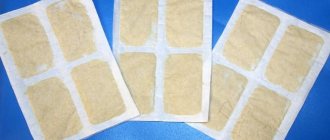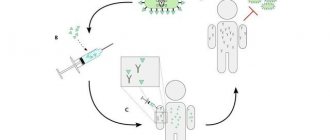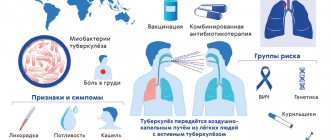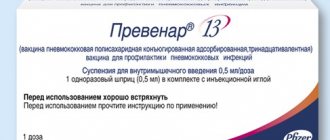→
Information
→
Vaccinal prevention
We work seven days a week and holidays
COVID 19: antibody tests
Vaccination helps protect the body from infections that can cause serious diseases. Thanks to mass vaccination of the population, mass epidemics were avoided. If a person gets sick, after vaccination he, as a rule, copes much faster with the disease, which passes in a “mild” form.
There are several vaccination methods that are actively used in vaccination rooms.
Vaccine administration intramuscularly
Perhaps this method can be called the most common and effective. It is characterized by a high rate of development of immunity due to the rapid entry of the vaccine into the body and its distribution to the desired areas.
Since the vaccine quickly spreads through the bloodstream, the risk of allergic reactions in this case is minimized.
The vaccine is given intramuscularly:
- for children under two years of age in the anterolateral surface of the thigh;
- children from two years old in the shoulder.
Vaccination technique
home
Information
For patients
General issues
Vaccination technique
- Routes of vaccine administration: Aerosol, intranasal (through the nose)
- Oral (by mouth)
- Intradermal and cutaneous
- Subcutaneous route of vaccine administration
- Intramuscular route of vaccine administration
Routes of vaccine administration
Aerosol, intranasal
It is believed that this route of vaccine administration improves immunity at the entrance gates of airborne infections (measles, influenza, rubella, etc.) by creating an immunological barrier on the mucous membranes. At the same time, the immunity created in this way is not stable, and at the same time, general (so-called systemic) immunity may be insufficient to combat bacteria and viruses that have already penetrated the barrier of the mucous membranes into the body.
A typical example of an intranasal vaccine is one of the domestic influenza vaccines.
Aerosol vaccination technique: a few drops of the vaccine are instilled into the nose or sprayed into the nasal passages using a special device.
The advantages of this route of vaccine administration are obvious: as for oral vaccination, aerosol administration does not require special education or training; such vaccination creates excellent immunity on the mucous membranes of the upper respiratory tract.
The disadvantages of oral administration of vaccines include significant spillage of the vaccine, loss of the vaccine (part of the drug enters the stomach), and insufficient general immunity.
Oral
A classic example of an oral vaccine is OPV, the live polio vaccine. Typically, live vaccines that protect against intestinal infections (poliomyelitis, typhoid fever) are administered in this way. However, oral vaccines are now being developed that will protect not only from intestinal infections - a vaccine against HIV infection on a bacterial carrier (Salmonella).
Oral vaccination technique: a few drops of the vaccine are dropped into the mouth. If the vaccine has an unpleasant taste, it is instilled either on a piece of sugar or a cookie.
The advantages of this method of administering the vaccine are obvious: such vaccination does not require special education or training, the method is simple, it is fast, and it saves on hiring qualified personnel.
Disadvantages of oral administration of vaccines include spillage of the vaccine, inaccuracy of the vaccine dosage (part of the drug is excreted in the feces without working), economic losses due to the need for repeated administration of the vaccine and its spillage.
Intradermal and cutaneous
A classic example of a vaccine intended for intradermal administration is BCG. Examples of intradermal vaccines include live tularemia vaccine and smallpox vaccine. As a rule, live bacterial vaccines are administered intradermally, the spread of microbes throughout the body is extremely undesirable. However, recently, intradermal administration of vaccines in a number of countries has begun to be used in order to save vaccine (such vaccination requires a smaller volume of vaccine) - for example, in some countries they are vaccinated against rabies. And WHO, meeting the wishes of health workers, has developed recommendations for the intradermal administration of rabies vaccines. For vaccines other than those mentioned, the intradermal route of administration is not yet recommended.
Technique: The traditional site for cutaneous vaccine administration is either the shoulder (above the deltoid muscle) or the forearm - midway between the wrist and the crook of the elbow. For intradermal administration, special syringes with special, thin needles should be used. The needle is inserted upward, almost parallel to the surface of the skin, pulling the skin upward. In this case, you need to make sure that the needle does not penetrate the skin. The correctness of the injection will be indicated by the formation of a specific “lemon peel” at the injection site - a whitish tint of the skin with characteristic indentations at the exit site of the ducts of the skin glands. If a “lemon peel” does not form during administration, it means that the vaccine is being administered incorrectly.
Advantages: Low antigenic load, relative painlessness.
Disadvantages: Quite a complex vaccination technique that requires special training. Possibility of incorrectly administering the vaccine, which can lead to post-vaccination complications.
Subcutaneous route of vaccine administration
A fairly traditional route for administering vaccines and other immunobiological drugs in the territory of the former USSR, well known to everyone with injections “under the shoulder blade” (this is how gangrenous and streptococcal toxoids are administered). In general, this route is suitable for live and inactivated vaccines, although it is preferable to use it for live ones (measles-mumps-rubella, yellow fever, etc.). Due to the fact that with subcutaneous administration, the immunogenicity and rate of development of the immune response are somewhat reduced, this route of administration is extremely undesirable for administering vaccines against rabies and viral hepatitis B.
The subcutaneous route of vaccine administration is desirable for patients with bleeding disorders; the risk of bleeding in such patients after subcutaneous injection is significantly lower than with intramuscular administration.
Technique: The vaccination site can be either the shoulder (the lateral surface of the middle between the shoulder and elbow joints) or the anterolateral surface of the middle third of the thigh. Using the index finger and thumb, the skin is taken into a fold and, at a slight angle, the needle is inserted under the skin. If the patient's subcutaneous layer is significantly expressed, the formation of a fold is not critical.
Advantages: Comparative simplicity of the technique, slightly less pain (which is not significant in children) compared to intramuscular injection. Unlike intradermal administration, a larger volume of vaccine or other immunobiological drug can be administered. Accuracy of the administered dose (compared to intradermal and oral routes of administration).
Disadvantages: “Deposition” of the vaccine and, as a result, a lower rate of development of immunity and its intensity when inactivated vaccines are administered. A greater number of local reactions - redness and hardness at the injection site.
Intramuscular route of vaccine administration
The most preferred route for administering vaccines. Good blood supply to the muscles guarantees both the maximum speed of immunity production and its maximum intensity, since a larger number of immune cells have the opportunity to “get acquainted” with vaccine antigens. The distance of the muscles from the skin ensures a smaller number of adverse reactions, which in the case of intramuscular administration are reduced only to some discomfort during active muscle movements within 1–2 days after vaccination.
Injection site: Injecting vaccines into the gluteal region is highly discouraged. Firstly, the syringe-dose needles of most imported vaccines are not long enough (15 mm) to reach the gluteal muscle, while, as is known, in both children and adults the skin-fat layer can have a significant thickness. If the vaccine is administered in the gluteal area, it is essentially administered subcutaneously. It should also be remembered that any injection into the gluteal region is accompanied by a certain risk of damage to the sciatic nerve in people with anatomical features of its passage through the muscles.
The preferred site for vaccine administration in children under 3 years of age is the anterolateral surface of the thigh in the middle third. This is explained by the fact that the muscle mass in this place is significant, despite the fact that the subcutaneous fat layer is less developed than in the gluteal region (especially in children who do not yet walk).
In children over two years of age and adults, the preferred site for vaccine administration is the deltoid muscle (muscle thickening at the top of the shoulder, above the head of the humerus), due to the small thickness of the skin and sufficient muscle mass to absorb 0.5–1.0 ml of the vaccine. In younger children, this site of vaccine administration is not used due to insufficient development of muscle mass and greater pain.
Vaccination technique: Regardless of the chosen site of vaccine administration, the intramuscular injection should be made perpendicularly, that is, at an angle of 90 ° C to the skin surface. When introducing the vaccine into the deltoid muscle, the injection is made strictly from the side, the position of the syringe must be strictly horizontal.
T.N. The Z-track technique consists of moving the skin in one direction before injection and releasing it after the needle has been withdrawn. On the one hand, the passage of a needle through stretched skin is less painful, on the other hand, due to the displacement of the channel, the vaccine is, as it were, “sealed” in the muscle.
Advantages: good absorption of the vaccine and, as a result, high immunogenicity and speed of development of immunity. Fewer local adverse reactions. Accuracy of the administered dose (compared to intradermal and oral routes of administration).
Disadvantages: The subjective perception of intramuscular injections by young children is somewhat worse than with other methods of vaccination.
Useful tips for parents and doctors on vaccination techniques for children
- Do not deceive children - injections are not absolutely painless, it is worth taking into account at least the emotional experiences of children about injections. It’s better to say that the injection “hurts a little,” “like a mosquito bite.” In this case, the child will be mentally prepared for the injection and in most cases will not notice it at all, which he will be very happy about. You should not go into unnecessary details of the injection in young children and vice versa - in older children, some details will be appropriate to argue in favor of the painlessness of the injection (“just think, within one second the needle will pass through the skin”, “the vaccine is only two drops and a syringe tiny").
- Never use injections as a threat, for “punishment” (“uncle will come and give an injection”). You should not develop a negative attitude towards injections and vaccinations in children, much less frighten them with them. Injections are necessary to be healthy and not get sick - such motivation will be correct.
- During the injection, it is better to sit the child on your lap - on the one hand, the child feels safer, and on the other, his movements are easier to control.
- Try to keep the child relaxed. It is better to cuddle younger children, and simply distract older children (soap bubbles, blowing out cheeks or “the world’s largest” bubble gum bubbles, blowing out imaginary candles on an imaginary birthday cake). For younger children, a small piece of sugar placed in the cheek may be helpful.
- Children over 5 years old can be asked to choose the injection site, i.e. in the leg (“like little ones”) or in the shoulder (“like adults”). The child thus gains a certain degree of control over what is happening, and he is pleased that doctors are also interested in his opinion.
- If several vaccines need to be administered, the child is small and not in the mood, then it is better to administer the vaccines at once in order to reduce the duration of discomfort. For example, two doctors or two nurses can simultaneously give two injections in two different legs.
- If there are a lot of children, then the old trick “who is the bravest?” can be very useful. Children want to be known as the bravest, even if they don’t want to be vaccinated. More often than not, it turns out that the youngest children are the bravest, and in this case the “older” ones have no choice.
- A simple technique significantly reduces the pain of intramuscular injection: press (through sterile cotton wool moistened with a 70% ethyl alcohol solution) on the site of the planned injection for 10 seconds. By the way, applying ice, contrary to popular belief, only relieves pain for 1–2 seconds.
Vaccination orally
Vaccines against enteroviral diseases are administered in this way. Parents who vaccinate their children according to the National Calendar are probably familiar with polio drops.
Oral vaccination involves dropping the required number of drops into the mouth or onto a small piece of biscuit. This trick allows you to neutralize the unpleasant taste of the medicine.
It is important to understand that administering the vaccine orally is convenient. However, it is impossible to accurately calculate the required dose of the drug, which does not allow obtaining a guaranteed effect from vaccination.
Regulatory support of the Russian Federation in the field of immunoprophylaxis
In the Russian Federation, vaccine prevention is considered an integral part of state health policy. In accordance with the paradigm of modern medicine - a shift in priorities from treating diseases to preventing them and maintaining health, vaccine prevention is presented as one of the main areas of disease prevention and the formation of a healthy lifestyle.
It is precisely these priority tasks that the activities within the framework of the national project “Healthcare” are aimed at, developed in accordance with Decree of the President of the Russian Federation No. 204 “On national goals and strategic objectives of the development of the Russian Federation for the period until 2024” dated 05/07/2018 on the basis of the Government Resolution RF “On the organization of project activities in the Government of the Russian Federation” dated October 31, 2018 No. 1288.
A system of measures carried out to prevent, limit the spread and eliminate infectious diseases through routine vaccination and vaccination for epidemic indications is carried out in Russia on the basis of the Federal Law of September 17, 1998 No. 157-FZ “On the immunoprophylaxis of infectious diseases”. On the territory of the Russian Federation today there is a National calendar of preventive vaccinations and a calendar of preventive vaccinations for epidemic indications, approved by order of the Ministry of Health of the Russian Federation dated March 21, 2014 No. 125n.
In accordance with this order, vaccination is carried out covering 12 infectious diseases:
- viral hepatitis B,
- tuberculosis,
- diphtheria,
- tetanus,
- whooping cough,
- hemophilus influenzae infection,
- measles,
- rubella,
- parotitis,
- polio,
- flu,
- pneumococcal infection.
Article 1 of the Federal Law of September 17, 1998 No. 157-FZ “On Immunoprophylaxis of Infectious Diseases” defines the national calendar of preventive vaccinations as a normative legal act establishing the timing and procedure for carrying out preventive vaccinations for citizens, and the calendar of preventive vaccinations for epidemic indications as a normative legal act establishing timing and procedure for carrying out preventive vaccinations for citizens according to epidemic indications. Depending on the epidemiological situation, changes may be made to the National Vaccination Calendar. An example is vaccination against viral hepatitis B, the need for inclusion of which in the national calendar of preventive vaccinations was due to the pronounced increase in the incidence and prevalence of this infectious disease in the 1990s.
According to paragraph 2 of Article 4 of Federal Law No. 157, the state guarantees citizens free preventive vaccinations included in the specified calendars in organizations of the state and municipal healthcare systems.
The organization and procedure for vaccination are presented in the guidelines dated March 4, 2004, “Procedure for Preventive Vaccinations” MU 3.3.1889 04, approved by the Chief State Sanitary Doctor of the Russian Federation (hereinafter referred to as MU 3.3.1889 04). Let us consider to what extent the MU data, in conjunction with other legal acts of the Russian Federation, meet the requirements of timeliness and efficiency within the organization and implementation of vaccine prevention measures in medical institutions on the territory of our country.
General rules for vaccination
The vaccine can only be given to a completely healthy person. During the administration of the vaccine, the body is under stress, so it is important to properly prepare for the procedure.
Before vaccination, an examination by a pediatrician or therapist is required. It would be a good idea to take a general blood and urine test the day before.
You can properly prepare for vaccination and administer the vaccine in a specialized center. Each patient can count on detailed consultation, attentive attention and comfortable conditions in the vaccination room.
General requirements for organizing and conducting preventive vaccinations
Guidelines MU 3.3.1889 04, developed by the Federal Center for State Sanitary and Epidemiological Surveillance of the Ministry of Health of Russia and approved by the Chief State Sanitary Doctor of the Russian Federation on March 04, 2004, contain detailed requirements for preventive vaccinations against infectious diseases. The main goal of these guidelines is to ensure that the management and personnel of the Ministry of Defense have knowledge and practical skills in organizing and conducting vaccination.
The instructions describe the requirements of regulatory and methodological documents in accordance with which vaccination is carried out. All preventive vaccinations are carried out as prescribed by a doctor, taking into account relevant indications and contraindications. Before vaccination, it is mandatory to interview the patient (or interview the parents or other representatives of the minor), and carefully study the medical documentation. All patients must undergo a medical examination with thermometry, and, if necessary, additional examination. The right of patients to free vaccination with vaccines from the national calendar of preventive vaccinations and the vaccination calendar for epidemic indications, as well as to free examination and examination according to indications, is regulated by Federal Law No. 157 FZ of September 17, 1998.
Before vaccinations, a medical worker is obliged to provide the patient with complete and objective information about the need for preventive vaccinations, the consequences of refusing them (clauses 11.2., 11.3. MU 3.3.1889 04), about possible post-vaccination complications in accordance with clause 4 of MU 3.3.1.1095 -02. 3.3.1. “Vaccine prevention. Medical contraindications to preventive vaccinations with drugs from the national vaccination calendar. Guidelines" (approved by the Chief State Sanitary Doctor of the Russian Federation on January 09, 2002). In case of refusal of vaccination, the patient is obliged to confirm it in writing (clauses 11.1., 11.4. MU 3.3.1889 04). After vaccination, the patient must remain under medical supervision for 30 minutes.
Vaccination must be carried out by trained medical personnel who have undergone special training (clauses 3.7, 3.8, 4.9 MU 3.3.1889 04), in special premises in compliance with all sanitary rules and regulations (clauses 4.1, 4.13 MU 3.3.1889 04).









